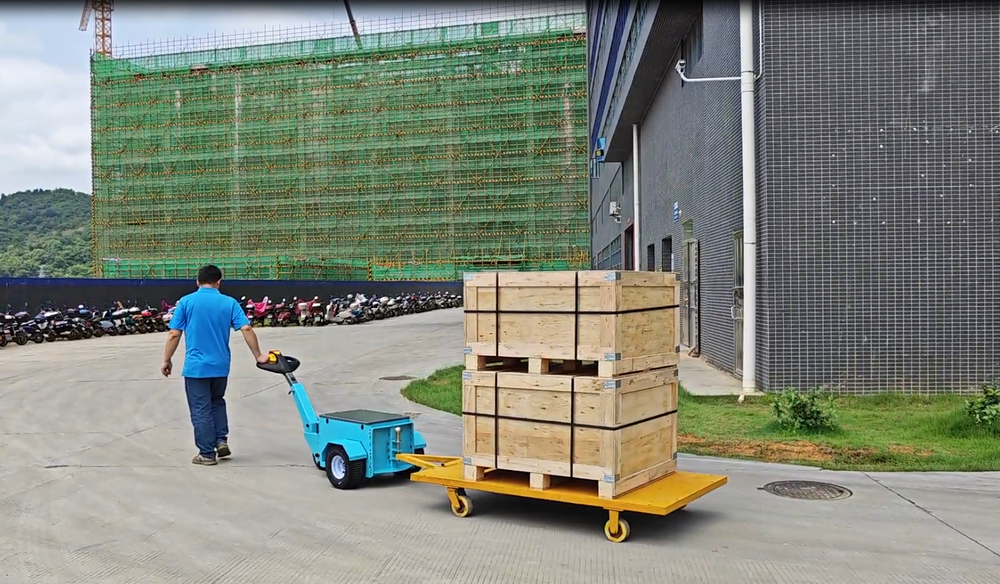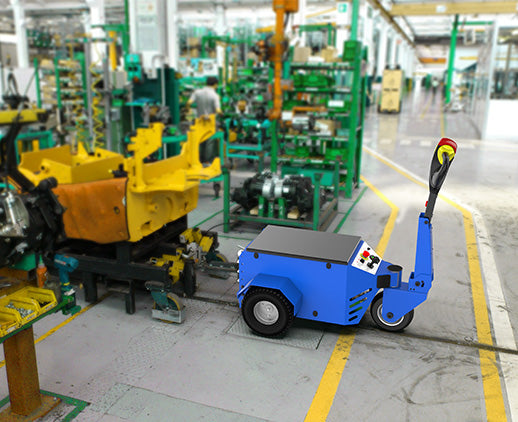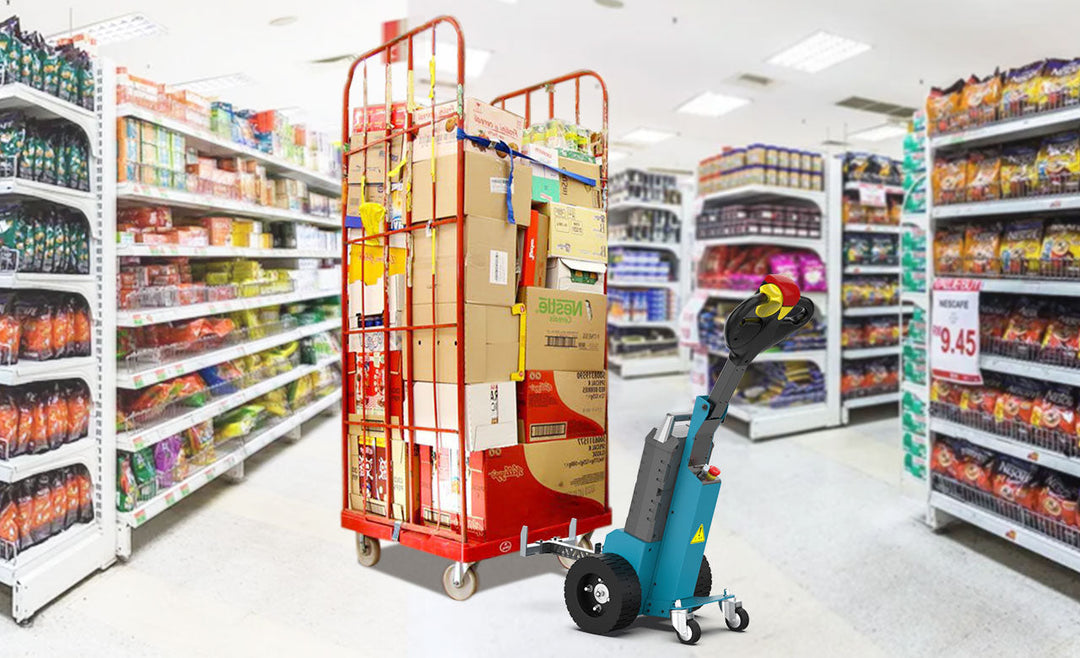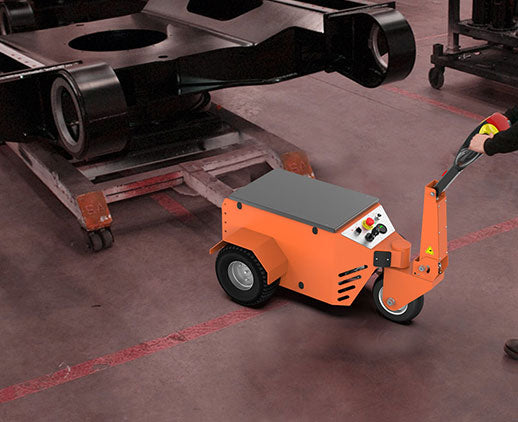Why do airports use aircraft tow tractor to push aircraft
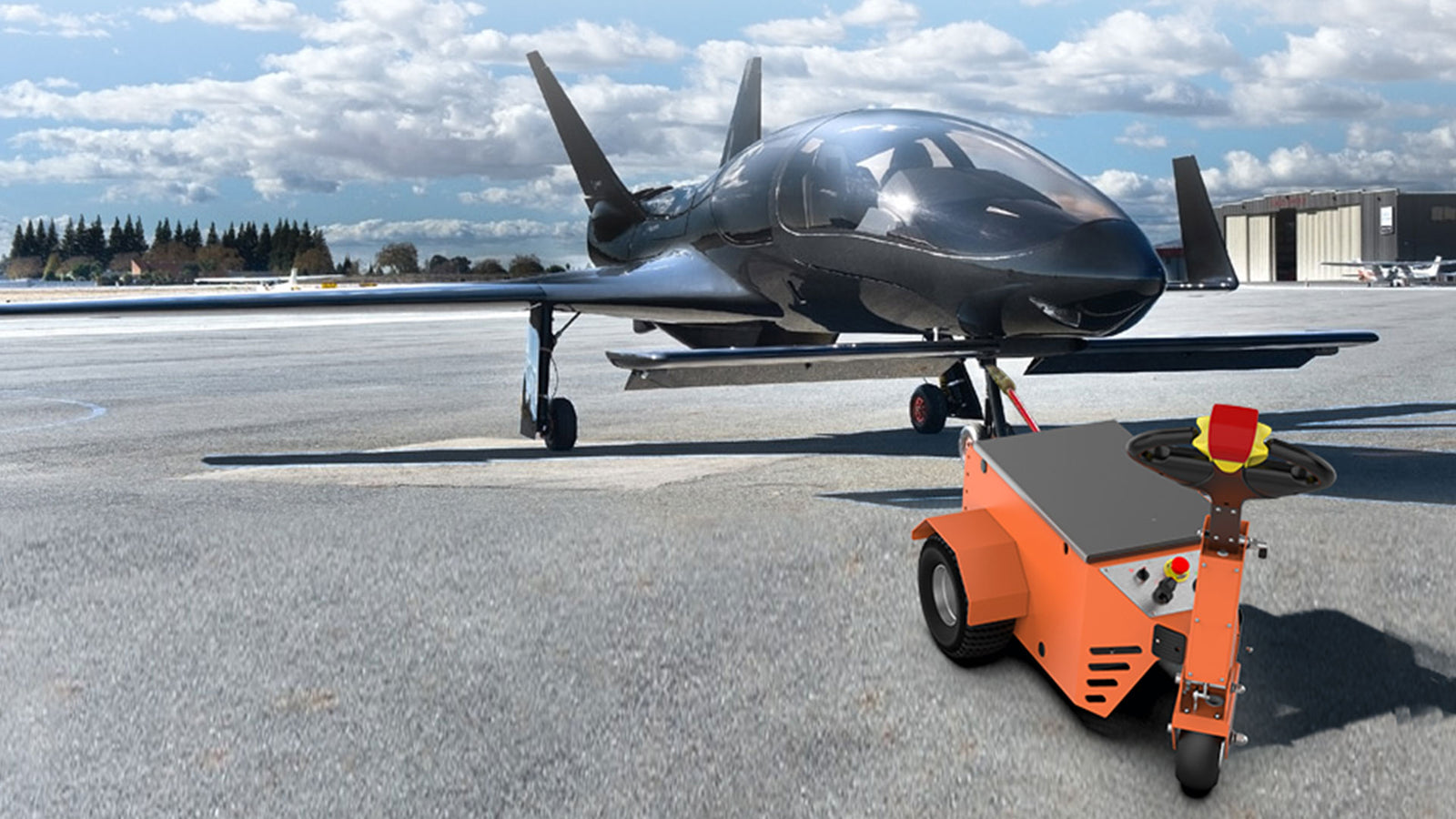
Aircraft tow tractors are normally deployed at airports to ensure that ground operations are safe, there is a reduction in fuel wastage, noise, and carbon emissions, with the inclusion of wireless remote control and brushless motor technology to ensure proper control in aircraft movement at confined spaces to avoid accidents or unnecessary engine wear.
Safety First
The airport's operation always has to give the first place to safety. This is important in case an aircraft is moving on the ground; even small mistakes may lead to grave consequences. Improvement of safety in aircraft ground operation and reduction of possible risks in aircraft taxiing are among the main objectives of the design of the aircraft tow tractor. During its ground taxiing, the pilots can hardly view anything from the cockpit-a typical situation when wings and the tail end. In cases like this, the use of tow tractors can better avoid accidents, since these tractors have flexible control and can be precisely adjusted by brushless motor controllers to avoid collision in a tight space.
The ergonomic design of the handle of the tow tractor ensures the demands of the operator in case of long operations, improving comfort and precision of control. If an emergency arises, the tractor is able to stop or change direction using wireless remote control for safe operation, both for aircraft and personnel. In comparison with aircraft self-powered taxiing, tractors move planes at slower speeds, which reduces the chances of collisions with ground personnel, other planes, or obstacles in general, especially under intensive circumstances in major airports.
About 70% of the ground accidents around the world are caused by poor visibility or operational error during aircraft movement. Modern tow tractors, especially those with wireless remote control, can reduce these incidents effectively. In airports with complex ground environments, interference with other ground equipment and personnel can also be reduced by using tow tractors to improve overall safety in airport operations.
Fuel Efficiency
Aircraft engines are very inefficient in low-speed taxiing conditions, which involves unnecessary fuel consumption and operational costs. As a matter of fact, engines are not able to operate at their optimal fuel efficiency level when taxiing on the ground before taking off. It is estimated in industry reports that a medium-sized aircraft consumes approximately 30-40 liters of fuel per minute during ground taxiing. This cost of fuel increases considerably with an increase in taxiing time, especially in big airports. Therefore, moving planes around using tow tractors is more and more preferred by airports and airlines rather than taxiing to the runway using their engine power.
The direct-current brushless electric drive axle of the tow tractor greatly reduces the noise while improving the operational efficiency. The high energy utilization that brushless electric motors can achieve also means constant and smooth power output on ground operations. If tractors with brushless motors are used for the towing of aircraft, it could vastly reduce the fuel consumption, especially in cases where the taxiing is quite long. This not only helps in reducing fuel costs but also effectively cuts carbon emissions towards energy savings and emission reduction.
Fuel efficiency does not only directly save money but also reduces the frequency of maintenance required by the engine. Lower usage of the engine on the ground reduces wear and tear, hence prolongs the life of the engines. Saving millions of dollars in yearly operating costs due to reduction in time spent on ground taxiing, aircraft tow tractors are rapidly becoming an indispensable factor in the administration of airports.
Precise Control
The control systems installed on modern aircraft tow tractors are very precise, with additional wireless control functions. With the wireless control, the tractor can be remotely operated by ground personnel without any physical contact to go forward, reverse, turn, and any other control with very fine precision. In comparison with diesel-engine-driven conventional tow tractors, modern electric tow tractors have highly precise brushless motor controllers and could maintain much stability and accuracy even at low-speed operation.
Most times, airport taxiways and parking stands are complex, with dense taxiway design in large international airports. Quite often, it requires precise planning of the movement path in order to avoid any accidents. In such a complex environment, tow tractors have provided better operational flexibility than aircraft self-taxiing. Aircraft self-taxiing lacks the precision to make fine adjustments in narrow spaces, whereas a tow tractor can ensure smooth ground movement with precise thrust and flexible turning radius.
Wireless control of tow tractors allows operators to guide aircraft in and out of tight gates easily, while it allows them, at the same time, to take manual control of the tractor in case an impending collision was detected. Real-time feedback of the operation data relevant to the handle by the tractor could be shown so that operators can judge the current status of the towing in a very short time and avoid incorrect operations. These control functions are precise, reducing the possibility of any form of error during ground movement and hence enhancing reliability during operations.
Noise Reduction
Aircraft engines create quite significant noise pollution when working on the ground. Especially during such procedures as taxiing, engine noise is sharp and disturbs not only the working conditions of the personnel but also people living in close proximity to the airport. According to the statistics of ICAO, the noise level of engines during the aircraft taxi can reach 110-120 decibels. Under the constant impact of such noise negatively affects hearing and, consequently, health in general.
On the other hand, towing by tractors will drastically reduce ground noise pollution. The brushless motor technology applied to tractors not only raised driving efficiency but also reduced mechanical friction, hence reduced the noise. In particular, for night-time airport operations, towing planes with tractors reduces noise disturbance to the nearby communities, thus meeting the strict regulations of most countries and regions over noise pollution.
Some major international airports have thus far begun to adopt large-scale electric tow tractors with the goal of greening operations. France's Charles de Gaulle Airport, for instance, has promoted electric tow tractors, thereby reducing noise complaints by 20% in three years. Noise reduction has become one of the keys to improving the airport image and reducing its operational costs for airports in city centers or densely populated areas.
Space Saving
Every inch of airport land is valuable, and aircraft tow tractors enable aircraft to make turns on the ground with a smaller turning radius than normal and hence make better use of the valuable taxiway and parking stand resources, especially at busy international hub airports where efficient use of space is important in regard to on-time flight operations.
In most cases, when the aircraft relies on its own power for movement, the turning radius is bigger, especially for wide-body aircraft that require larger space for turns and may limit other aircraft from taxiing or parking. With tow tractors, airports will be able to provide more precise movements of aircraft, which would reduce the occupancy time of taxiways and enhance ground operational efficiency.
Efficiency has become a vital consideration in modern airport gate and parking stand designs. Tow tractors can help planes back into gates or precisely park in stands, hence making for better airport operations-a consequence of reducing wait times taken up by aircraft taxiing. For the same reason, tractors require shorter paths for ground movement, further optimizing airport ground traffic.
Easy Maintenance
Aircraft tow tractors save not only the running time of aircraft engines but also extend their service life, reducing maintenance costs. It can be seen that frequent starts and stops, with several low-speed maneuvers in taxi operations on land, may increase engine wear. Application of the tow tractor can avoid this kind of problem, hence making the engine complete its best performance in the air, not by taxiing on land.
Contemporary designs of tow tractors also consider aircraft needs but equally take into consideration easy maintenance. With direct current brushless electric drive axles, for instance, mechanical wear and failure rates are considerably reduced. This is because this advanced brushless motor does not suffer the friction of conventional carbon brushes, hence increasing the life of the tow tractor and reducing routine maintenance.
Compared with diesel tractors, electric tow tractors require much less frequent repairs, and their operation is smoother, without the constant adjustments and fixes. Surveys carried out in industries indicate that electric tow tractors reduce maintenance cost by about 15%-20%, thus offering long-term economic advantages to frequently used airports.
Environmentally Friendly
Aviation is one of the industries that highly contributes to carbon dioxide emissions on the planet. As international environmental regulations become more stern, it becomes urgent for airports and airlines to find ways to cut their carbon footprint; here comes the use of aircraft tow tractors. Applying an electric tow tractor in both ground operations will lead to significant carbon emission reduction in airports.
Large airports may also reduce yearly carbon emissions of about 10,000 tons with electric tow tractors alone. For example, John F. Kennedy International Airport in the United States put into operation a large amount of electric tow tractors to successfully reduce emissions of carbon dioxide on the ground by 10%. In such a way, airlines are able to meet international environmental standards and provide much greener and more sustainable service at this airport.
Aircraft tow tractors have become an indispensable part of modern airport ground operations. Be it enhancing safety, saving fuel, reducing noise, or benefiting the environment and economic efficiency-the role of tow tractors has become quite indispensable in the management of airports. By integrating advanced technologies like brushless motors and wireless control into airport operations, as indicated in the figure, future operations will be more efficient, safe, and friendly to the environment.




